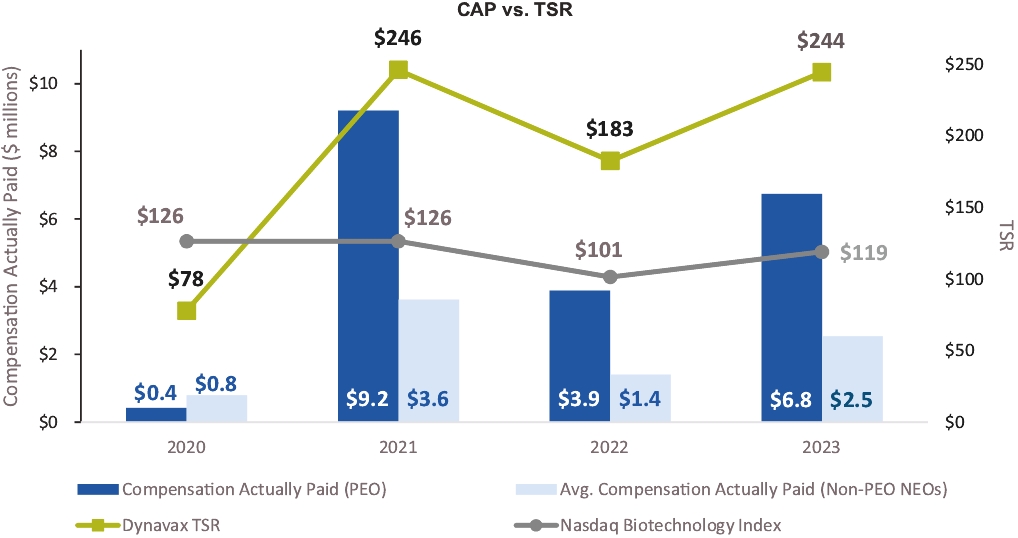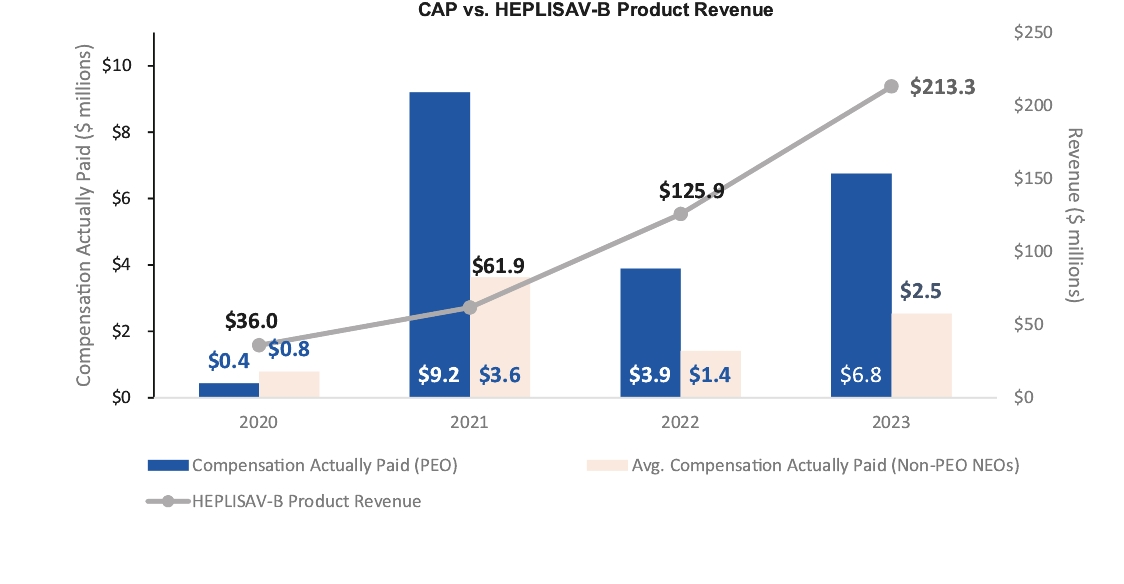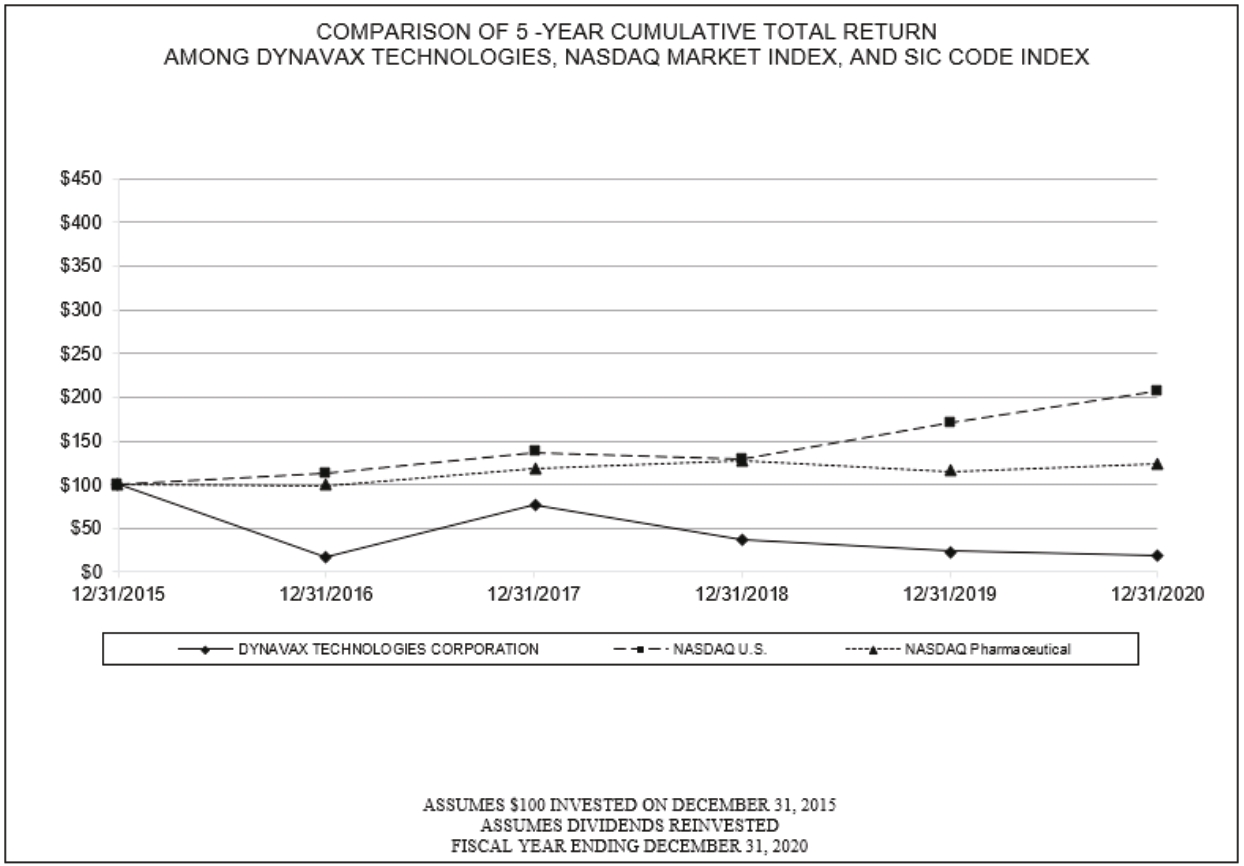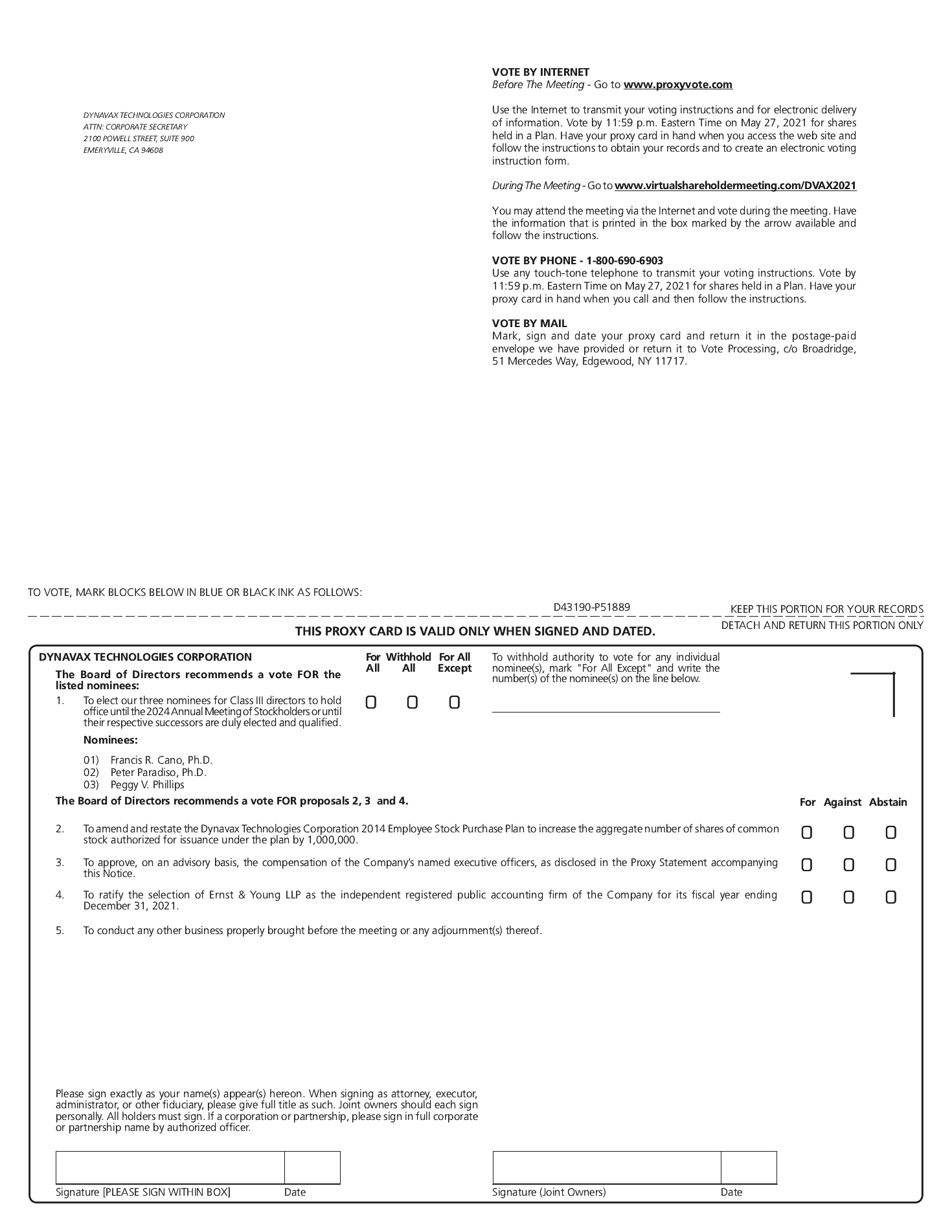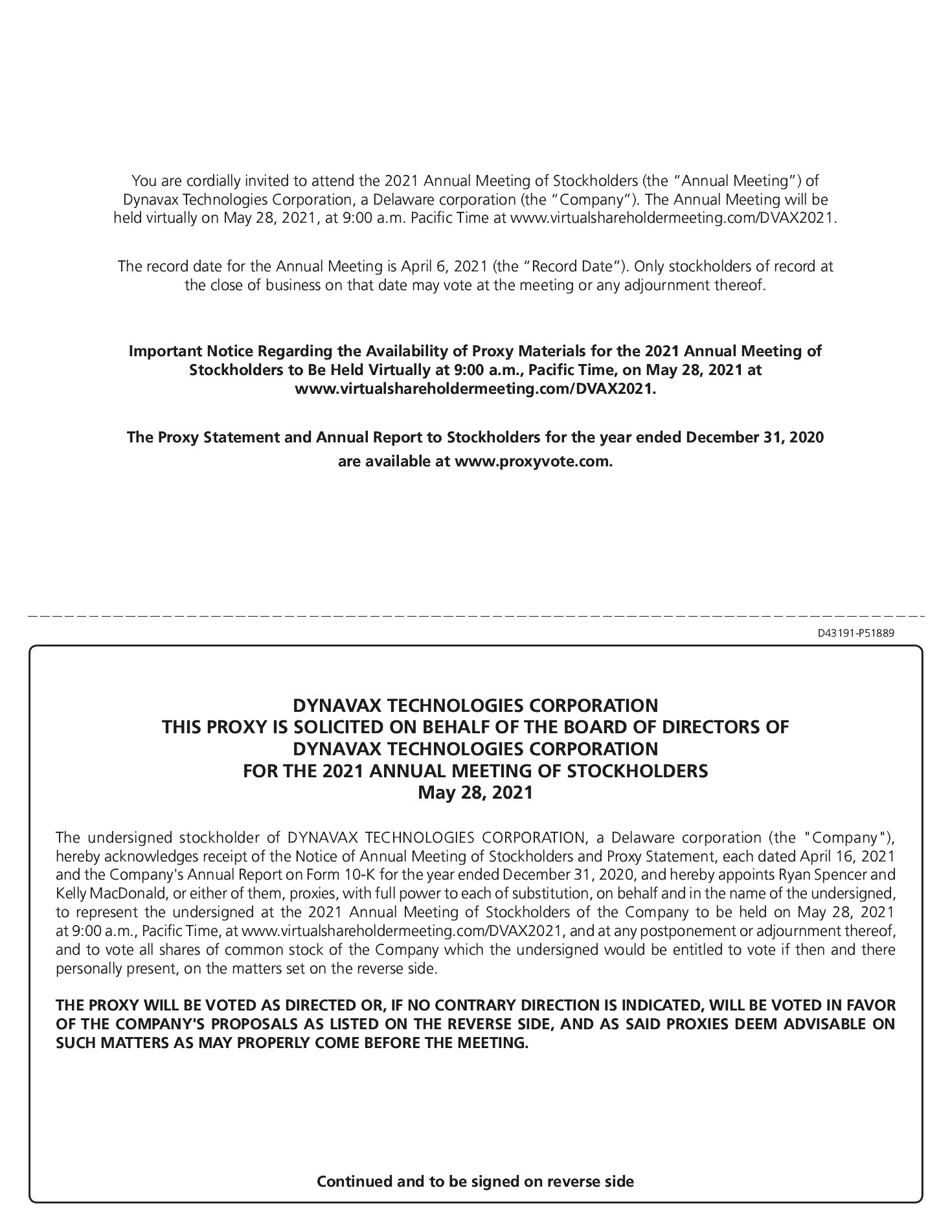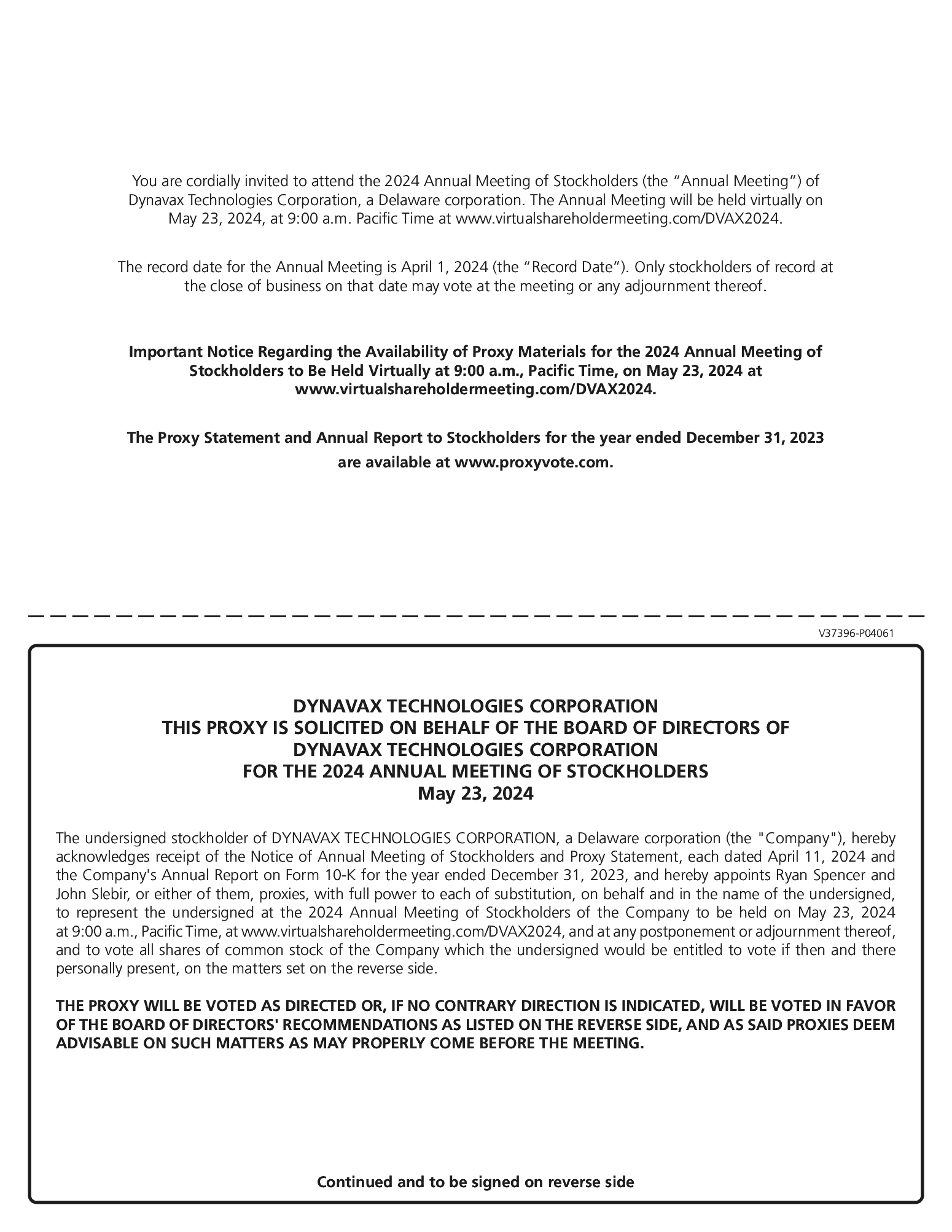Given that full commercialization of a new vaccine takes several years and the long product development cycles in our business, we believe delivery of long-term value to our stockholders is the best measure of our performance.
In addition to executing on our strategic focus, Messrs. Spencer and Novack, our other NEOs, and our broader leadership team devoted substantial time and energy last year ensuring an orderly transition of the Company through the period of significant change, including but not limited to converting to a nearly fully remote workforce in light of the COVID-19 pandemic, pursuing licensure of HEPLISAV-B in Europe, scaling our available capacity to supply CpG 1018 and other changes associated with our the new strategic focus, the impact from COVID-19 restrictions and associated needs.
Currently, we believe the potential net sales for total U.S. adult hepatitis B vaccines is over $400 million annually and could reach up to approximately $600 million in net sales annually. Our field sales force of approximately 65 people is sized to cover approximately 70% of hepatitis B vaccine sales in the U.S.
In furtherance of our strategic focus, our NEOs focused on executing our HEPLISAV-B business strategy by continuing to work toward successful commercialization of HEPLSIAV-B, bolstering our in-house sales force, enhancing our sales strategy, further developing a distribution network, and working to achieve sufficient manufacturing capacity to help ensure we successfully meet demand and that such manufacturing was done in accordance with applicable quality requirements. With respect to growing our adjuvant sales, our NEOs acted nimbly throughout the year to increase our capacity to supply CpG 1018 for ourselves and for our collaborators, and entered into numerous preclinical and clinical collaborations, some of which are currently in clinical trials and some of which have already yielded commercial supply agreements and revenue. Under these commercial agreements, we are selling CpG 1018 as an adjuvant for vaccines developed by our collaborators. In addition, we recognized the importance of completing our post-marketing safety study as well as our study of the use of HEPLISAV-B in patients undergoing hemodialysis. Our NEOs also focused on vaccine development, growing our pipeline and completing the wind-down of our immuno-oncology program.
Despite the significant challenges brought about by the COVID-19 pandemic, we believe that 2020 was a year of many positive developments for our Company that positioned us for future success. For example, we believe that our orientation toward a pure-play vaccine business as well as efforts to scale our adjuvant business have positioned the Company well for the future. And for HEPLISAV-B, we continued the commercialization process with further significant strides in our sales efforts, we increased our market share in field targeted accounts, we demonstrated continued compliance with quality requirements, and all despite the headwinds provided by the pandemic. We also completed our post-marketing safety study and are awaiting final results. We believe that each of these developments served to lay a foundation for future commercial success for HEPLISAV-B and CpG 1018 through continued advocacy and adoption efforts.
HEPLISAV-B
For 2020, we note several key accomplishments pertaining to HEPLISAV-B. From a product sales perspective, we achieved annual HEPLISAV-B product revenues, net of $36.0 million in 2020, as compared to $34.6 million in 2019, despite a significant decrease in adult vaccine utilization due to the COVID-19 pandemic. We increased our market share in field targeted accounts from 20% to 26%, and we converted two major national retail pharmacy chains.
In addition, as a result of substantial efforts expended during 2020, we received Marketing Authorization approval of HEPLISAV-B in February 2021 from the European Commission following a positive recommendation in December 2020 from the European Medicines Agency Committee for Medicinal Products for Human Use for prevention of infection caused by all known subtypes of hepatitis B virus in adults aged 18 years and older.
We are advancing a pipeline of differentiated product candidates that leverage our CpG 1018 adjuvant to develop improved vaccines in indications with unmet medical needs. These programs include vaccine candidates under development for shingles, Tdap and plague.
Overview of 2023 Performance
We believe that 2023 was another highly transformative year for Dynavax, where we made substantial progress against our core strategic priorities:
Drive growth in HEPLISAV-B [Hepatitis B Vaccine (Recombinant), Adjuvanted];
Advance our differentiated pipeline programs into clinical trial initiations and data readouts; and
Identify strategic opportunities to accelerate growth, while maintaining a disciplined allocation of capital aligned with corporate strategy to deliver long-term value through internal and external innovation.
We successfully executed on these key objectives over the course of the year, as described in greater detail below. Highlights include once again producing all-time high revenue for our HEPLISAV-B vaccine, successfully moving forward several clinical programs, continuing our disciplined approach to corporate development, improving our capital position by generating positive cash flow and increasing cash, cash equivalents and marketable securities by more than $100 million, to a balance of $742 million at fiscal year-end. We believe these accomplishments have put us in a strong position to further advance the business and strategy during 2024 and beyond.
Key 2023 Highlights and Performance Against Core Priorities
During the 2023 performance year and early 2024, we achieved the following in connection with our plans to launch HEPLISAV-B in the European Union in late 2021, initially focusing on one or a few key countries where it would be commercially feasible to market HEPLISAV-B on our own or through third-parties.core priorities described above:
During 2020 we also made progress on our open-label, single-arm studyMaximize Growth of HEPLISAV-B in[Hepatitis B Vaccine (Recombinant), Adjuvanted]
Further leveraging the CDC’s Advisory Committee on Immunization Practices (“ACIP”) recommendation that all adults with end-stage renal disease who are initiating or undergoing hemodialysis. The primary endpoints were to evaluate the immunogenicity induced by HEPLISAV-B at week 20 as measured by seroprotection rate and to evaluate the safety of HEPLISAV-B with respect to clinically significant adverse events. In the trial, four doses of HEPLISAV-B induced a seroprotection rate of 89.3 percent at week 20, with high anti-HBs antibodies. Interimaged 19-59 should be vaccinated against hepatitis B (“ACIP






